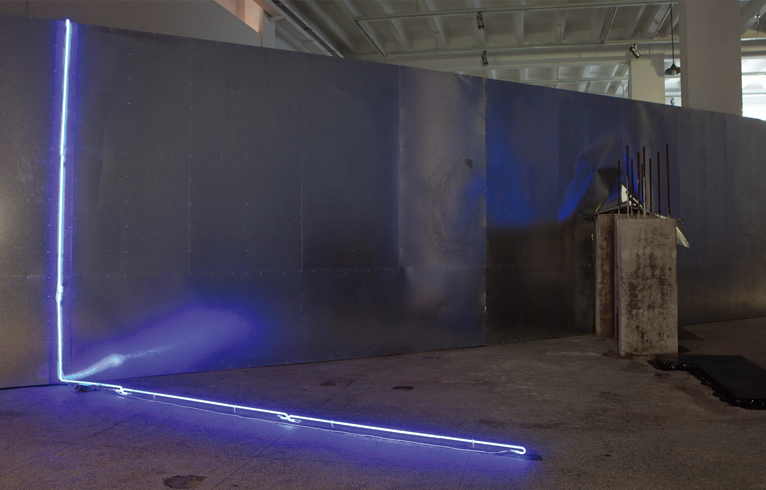SENSORY TRAINING
| August 10, 2012 | Post In LEAP 15

Exhibitions at Vitamin Creative Space all bear the gallery’s signature, although this faint mark remains within art circles and is yet to be openly and seriously discussed in a more public setting. Vitamin’s mode of operation is characterized by careful selection from its immediate environment, the “individual” perhaps the key to the majority of their exhibitions.
In “Sensory Training,” Xu Tan presents Narratives and Claims: Discussing Neo-Liberalism in Taipei, a continuation of his “Keywords” series. It consists of four LCD screens, three of which present footage of different interviewees, while the fourth shows footage shot in Taipei, most of it landscape-based. Near this hang a few contextual photographs, mostly portraits of people the artist believes are influential figures in the Taiwanese art scene. Other small screens are placed on irregular round tables, and show more scenes of different discussions. Only from the gallery’s guide does one discover that these are interviews conducted by Xu in Taiwan on the topics of “art systems, neoliberalism, financial intervention, cultural policy.” As the guide ex- plains, “the screens are purposefully arranged from left to right, in accordance with the views of the interview subjects on neoliberalism: from those leaning to the left, to those in the center, and then leaning to the right. Also, the physical form of this installation is designed to present the fact that the discourses of different political stances actually lack a clear boundary: the narratives and claims of all actually intermingle.” Indeed, stepping into this work seems like positioning oneself within a jumbled clash of noise.
Meanwhile, Hong Kong artist Pak Sheung Chuen’s contribution to “Sensory Training” exercises its own “disappearance,” the audience frequently and unknowingly passing beneath, standing on, or trampling right over the work. Sketches of Guangzhou—2012.14-17 and Sketches of Guangzhou—2012.01.14-18 emerge in a miniature line of characters printed across the floor and ceiling, which trace a graceful gray dotted line around the gallery space, dividing it into two. Those already acquainted with Pak’s work might be permitted a knowing smile— he certainly has the ability to make the ordinary extraordinary, and together with the pile of “trash” also featured within the gallery, everything possesses Pak’s distinctive air. In reality, these are materials left over from his last exhibition, but here they become the point of departure and the subsequent expression of his contribution to this exhibition.
Lee Kit’s showing is perhaps the most powerful indicator of “Sensory Training.” His I Just Want To Be An Object is a composite installation of independent elements into which the viewer is drawn through painting on the surface of everyday objects. Faintly evoking a person’s absence, his intention is to construct the perception of a portrait. One of these works hanging on the wall appears to be a piece of painted cardboard, with the logo of the skincare brand Neutrogena pressed into its blue acrylic. As the audience member unconsciously moves towards this object for inspection, something unexpected happens: stepping onto a foot cushion placed on the floor, the viewer is simultaneously enveloped by fluorescent light. This experience is perhaps particularly resonant to male viewers, as it alludes to the daily activity of entering a brightly-lit bathroom for a morning shave. The sensory experience Lee has created here is both solid and synesthetic.
If each of the works featured in this group exhibition were represented in solo exhibition format, certain prevalent themes (such as neoliberalism) and formal notions of artifice would naturally become each respective works’ guiding theme. Indeed, this essential communicative function shouldn’t ever become a particular concern for the artist. But, this particular group show format causes the works’ respective signifiers to cancel each other out: various discourses and fields of knowledge dissipate in the space. Thus, the stance of this exhibition plainly emerges: it is merely concerned with the individual and with perception. Xi Jie (Translated by Dominik Salter Dvorak)

